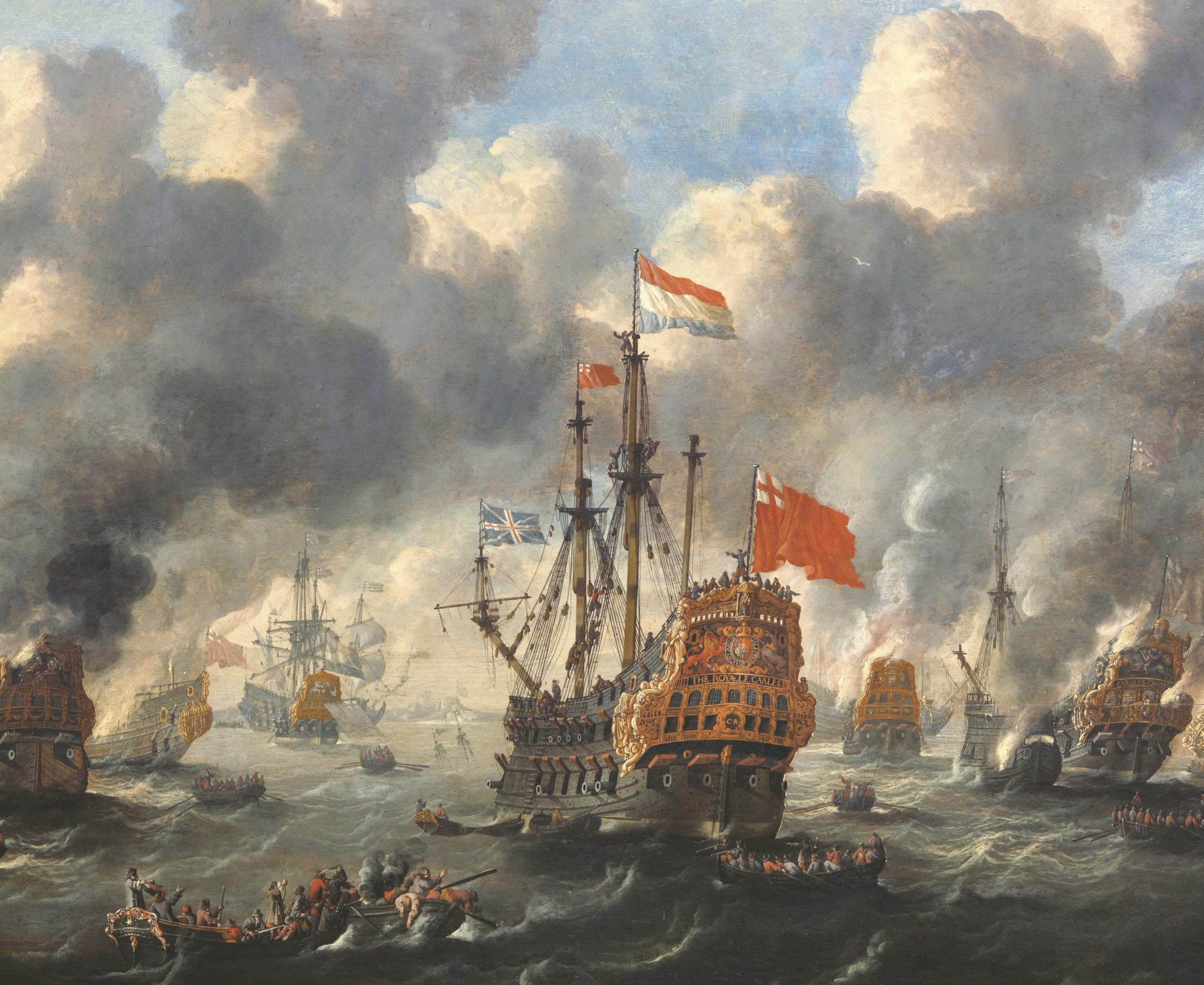
Authors Cor van der Heijden Idzard van Manen Anjo Roos Frouke Schrijver Frank Tang Jos Venner
Editor Jos Venner Translation Taalcentrum-VU
English-language editors Sianne Wong Elisabeth van Borselen


Authors Cor van der Heijden Idzard van Manen Anjo Roos Frouke Schrijver Frank Tang Jos Venner
Editor Jos Venner Translation Taalcentrum-VU
English-language editors Sianne Wong Elisabeth van Borselen
ThiemeMeulenhoff is developing from being an educative publisher to a modern learning design company. Our growing expertise, experience and learning solutions makes us a partner for schools in modernizing and improving their education. Together we can highlight the differences between the students and schools, and also make sure that learning becomes more personal, more effective and more efficient.
ThiemeMeulenhoff offers books, but more often digital teaching methods. ThiemeMeulenhoff develops these materials along with the schools.
www.thiememeulenhoff.nl/en
ISBN 978 9006 39124 4
First print, first edition, 2016
© ThiemeMeulenhoff, Amersfoort 2016
All rights reserved. No part of this edition may be reproduced, stored in an electronic database, or made public, in any form or by any means, be it electronic or mechanical, including photocopying, recording, or in any other way, without the prior written permission of the publisher.
In as much as photocopying material from this edition is allowed according to article 16B of the Dutch Copyright Law 1912 j° ruling August 23rd 1985, statute 471 and article 17 Dutch Copyright Law 1912, one must pay the obligatory compensation to the PRO foundation – the Publication and Reproduction Rights Organisation, PO Box 3060, 2130 KB Hoofddorp (www.stiching-pro.nl). To be able to use a part of this edition in an anthology, reader or other compilation (article 16 Dutch Copyright Law) one must first contact the publisher. Further information about the use of music, film and photocopying in education can be found at www.auteursrechtenonderwijs.nl .
The publisher has endeavoured to regulate the authors’ rights according to law. However, those who believe that certain rights can still be claimed, may contact the publisher.
This edition has been manufactured in a CO2-neutral way. This edition has been printed on FSC® trademark paper. This paper is produced from environmentally responsible forestry.
age of explorers and reformers
1 Sailing beyond the horizon 6
1.1 Voyages of discovery 10
1.2 The Portuguese trading empire 14 1.3 Spain conquers America 16 1.4 The New World 22 1.5 Europe and the world 26 1.6 Round-up 28
age of explorers and reformers
2 The Revolt 30
2.1 Dissent in the Church 34 2.2 Unrest in the Low Countries 39 2.3 The Revolt breaks out 43 2.4 William of Orange and Philip II 45 2.5 The Republic 48 2.6 Round-up 53 age of regents and kings
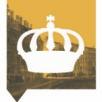
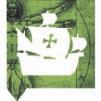

3.1 Amsterdam: staple market of the world 60 3.2 The East and the VOC 63 3.3 The WIC and Suriname 68 3.4 Faith, tolerance and research 71 3.5 Living the good life and showing it 74 3.6 Round-up 80
age of regents and kings
age of explorers and reformers
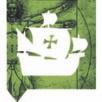

age of wigs and revolutions
4.1 Louis XIV, an absolute ruler 86 4.2 Enlightenment: theory and practice 90 4.3 The Ancien Régime 93 4.4 The French Revolution 97 4.5 Emperor Napoleon 100 4.6 Round-up 104 age of wigs and revolutions
age of citizens and steam engines
5.1 Agrarian and demographic revolutions 110 5.2 The rise of factories 113 5.3 For a handful of shillings 118 5.4 Europe seeks markets 121 5.5 The red spectre haunts Europe 127 5.6 Round-up 130
age of regents and kings



age of wigs and revolutions
age of citizens and steam engines
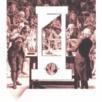
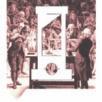




6.1 Colonists, Native Americans and African Americans 136 6.2 Independence 139 6.3 North and South 144 6.4 American Civil War 146 6.5 World power 149 6.6 Round-up 156
A quick overview of the skills 158 Governance 160 Maps 162 Terms 164 Illustration notes 168
3
age of citizens and steam engines age of world wars i: first world war age of world wars ii: second world war age of television and computer

This is your history coursebook. The chapters follow the course of history. This coursebook contains everything you need (texts, sources) for the assignments in the workbook.

• You will always work based on your workbook. Your workbook tells you what you have to do.
• The first four pages of each chapter tell you what the chapter is about.
• You will find a brief explanation and list of the significant developments in the period of history described in the chapter.
• You will also read why this period is so important.
• You will then find the main question and a number of subquestions. There is usually one subquestion per section.

• Each section starts with the subquestion for that section.
• A section consists of texts and sources. A source can be a picture (image source) or a text (text source).

• The boxes provide information on how states are organized.
• Some sections have a skills block. These blocks explain the history skills you need to learn. You will complete assignments to help you learn these skills. The assignment will say: Practise your knowledge...

• Two sections give you the opportunity for further study.
• Each section starts with an assignment in which you will see what you already know about the topic.
• You will summarize what you have learned in the final assignment in each section.
• The end of each sectio n lists what you will need to know for a test: the tips for the test.
• The last block of each section tells you about the section’s assignments (knowledge, comprehension and application).
• Sometimes you will see this symbol in an assignment. This means you will have to use Phoenix online for this assignment.
• this symbol means that you can work on this assignment together with others.


• The sixth section in a chapter is called the Round-up. This section summarizes what you have learned. It tells you: the significant developments of the period, what you have learned so far and what you are now able to do.
• The period’s most important events and people are shown here in the timeline.
• The chapter’s terms are also grouped together in the Round-up.

• The workbook has assignments that will help you to prepare for a test. Some assignments ask you to practice your history skills, and some assignments are on terms from the chapter. Finally, you will complete a summary assignment.
www.thiememeulenhoff.nl/phoenix


the renaissance age of explorers and reformers (1500-1600)
Petrus Plancius (1552-1622) was born in Flanders but mainly worked in Amsterdam. He studied to be a clergyman but he is best known as a cartographer and navigator. He taught sailors how to use maps and nautical instruments. He then commissioned them to report new sightings of unknown territories. Their reports enabled him to perfect his maps. He also instructed sailors to tell him about the stars they saw in the southern hemisphere. You can tell Plancius was interested in the stars because his map includes two discs that show the zodiac of the northern sky and the southern sky. He did not know much about the southern sky. The edges of the map are filled with pictures of the various continents: Europe, Asia, Africa and America and the peoples and animals that live there. The use of the compass and other navigational instruments had made voyages of discovery possible. Plancius did not print such richly illustrated maps himself, but he did provide the knowledge on which they were based.
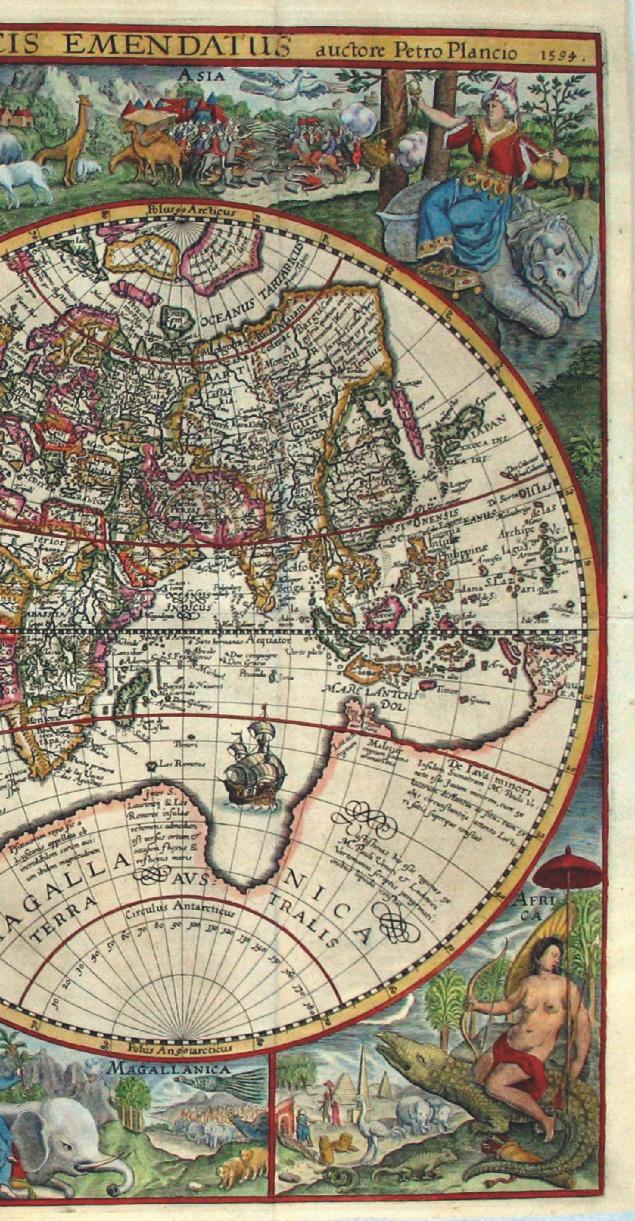
The maps appeared in a popular series of picture books about the New World, which had only just been discovered. These picture books were published in Northwestern Europe at the end of the sixteenth century. The series was called Les Grands Voyages and was produced to tell a wide readership about the great sea expeditions of the age. It was translated into several languages, so that Europeans of different nationalities could learn about the discoveries made in the previous century. What did that new continent look like? Who lived there? What plants and trees grew there? Travel journals and detailed engravings showed how these foreign people lived, the regions they inhabited and how European explorers and conquerors had discovered and conquered these distant territories. For many Europeans this was the first introduction to the world on the other side of the Atlantic. A New World.
In August 1492, maritime explorer Christopher Columbus set sail from Spain with three ships. Columbus believed he could reach Asia by sailing west, something that until then no one had succeeded in doing. After sailing for seventy days, Columbus sighted land... was this China or
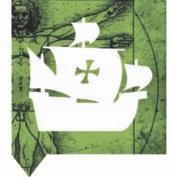
India? He went ashore, planted the Spanish flag and encountered the local population. In his journal he wrote that the people he met seemed to be lacking in everything. They were all naked and those I saw were young and well-built. Their hair, coarse as a horse’s tail, was cut short and combed towards the forehead at the front, except for a small section at the back which they leave long. They paint their skin. They do not carry weapons and are not familiar with them. When I showed them swords, they took hold of the blade and cut themselves. I think it will be easy to convert them to Christianity, because they do not appear to have their own religion.” He called these people ‘Indians’. Only later, when Columbus and other explorers had made several voyages to the west, did it become clear that this was not Asia, but another, previously undiscovered continent.
After Columbus discovered America in 1492, Spain wanted to take possession of this territory. There were riches to be found, especially gold, and the population could be converted to Christianity. New expeditions were planned and armed soldiers were shipped from Spain to conquer the indigenous peoples. Among them were the Aztecs, who lived in Central America. The Aztecs had nothing but simple weapons to defend themselves against the Spaniards, who were armed with iron swords and guns. The Aztecs had never seen heavily armed fighters on horseback and they were in awe of the Spanish horsemen. When a rider dismounted, they thought it was a huge monster splitting in two. In 1521 the Spaniards defeated the Aztecs and destroyed their capital city. The same fate awaited the Incas in South America. By around 1540 the Spaniards ruled all of Central and South America. The Spaniards suppressed the culture of the local peoples and their belief in many gods. Instead, the indigenous peoples adopted the faith of the Spaniards, and were sometimes forced to do so.

The Spanish conquerors changed American society. But the imports of gold and silver and the new trading opportunities also changed Europe. Every year ships brought valuable cargoes back to Spain. The Spaniards used these riches to finance wars against the Netherlands, France and the Ottoman Empire. The spread of Spanish power in America is an example of European overseas expansion.
Another example of European expansion is the trading empire that Portugal established in Asia. It was the Portuguese who first began to explore the world outside Europe. They went in search of sea routes to India so that they could buy spices directly instead of relying on Arab merchants. Once they had discovered the route around the Cape of Good Hope, the southernmost tip of South Africa, and were able to sail to India, the Portuguese had to fight their way into an existing trade network in Asia. It was not possible for them to conquer vast territories so far away from the motherland but the Portuguese did secure a share in the spice trade with the islands in the Indian Ocean and the countries around it. They used force to impose trade relations on local rulers. To protect their trade, the Portuguese established fortified trading posts along the coast. This resulted in a Portuguese trading empire in Asia.
The discoveries made by the Portuguese and the Spaniards meant that oceans were no longer an obstacle but a gateway to new markets and different cultures. Regular contact between Europe and peoples in other parts of the world was now possible. The European expansion led the Portuguese and the Spaniards (and later the British, the French and the Dutch) to claim ownership of parts of Asia and America (colonies). This created trade on a global scale: Western European ships carried cloves from Asia, transported African slaves to America and sailed into European ports carrying gold and silver.
New resources were tapped, new peoples were discovered and sometimes exploited and conquered. Our knowledge of the world and shipping increased rapidly. These contacts also changed how Europeans saw the world: their travels made them better at mapping the world and also altered their way of thinking. People began to question the certainties of the past. What did they actually know of the world? Their thinking was no longer centred on the world order as stated in the Bible and taught by the church. Man himself, as critical thinking being, became increasingly important.
1 The beginning of European overseas expansion.
2 The changing Renaissance view of the world and mankind.
How did the discovery of America and the founding of a trading empire in Asia change the societies of Europe and America?
1 Why did Europeans go in search of new trade routes overseas?
2 How did the Portuguese establish a profitable trading empire?

3 How did Spain take possession of America?
4 How did Spain change American society?
5 What effects did the discovery of America and the trading contacts in Asia have on Europe and the worldview of the Europeans?
A king receives a precious gift: two bags of peppercorns. Miniature from the Livre des Merveilles du Monde, the French translation of the travels of Marco Polo, circa 1410-1412.

In the Middle Ages, Europe had trading contacts with merchants from the Middle East and North Africa. These merchants traded in products such as silk, precious stones, sugar (produced from sugar cane) and also spices, which were very popular in Europe. Spices were used in the preparation of food, not to preserve meat or to disguise rotting, but because people liked to improve the taste of dishes with pepper, cinnamon, ginger, nutmeg, cloves and other flavours.
Spices and other exotic wares were also used as a health tonic and to make perfume and medicines. Moreover, by using spices, people could show how rich they were. A pound of pepper cost as much as a whole pig.
Spices and goods such as silk and sugar came from East Asia and were very expensive. Caravans transported the merchandise over land. A famous trade route, the Silk Road, stretched all the way from China to the Middle East. On a long route like this, each merchant took care of a section of the journey. When he had completed his section of the route, he sold his products on to another merchant who then did the same. This process was repeated until
To combat the foul smell of plague, wealthy men may benefit from a perfume made from the following ingredients: agarwood and amber (2 drachmas each), best quality myrrh and frankincense (1 ounce), camphor, storax, dried rose petals (2 drachmas), sandalwood from Makassar, eucalyptus leaves (1 ounce). Grind them together with resin or with rosewater from Damascus in which camphor has been dissolved. This mixture can then be used to make pills or tablets.
Paraphrased from: Regiment de preservació de la pestilència, from 1348, the year of the plague.
the products reached the merchants in Europe. The merchants of Venice were mainly responsible for buying many valuable goods from the eastern Mediterranean and bringing them to Europe. Merchants then transported the Asian merchandise over land to Western Europe. In the fourteenth and fifteenth century, merchants from Genoa dared to transport these profitable products over the sea to Bruges. At the time, Bruges was the most important port in Northwestern Europe. All these intermediate steps drove prices sky high. The merchants from the Middle East benefited most from this chain of trade.
1 Why did Europeans go in search of new trade routes overseas?
In Baghdad they make silk and gold brocade fabric with birds and other animals embroidered on them. It is the largest city in the region. Through the middle of the city flows a huge river [the Tigris], on which you can sail all the way to the Indian Ocean, so there is a constant coming and going of merchants with their wares. The merchants who travel to the Indies navigate the river till they reach a town called Khism, on the Indian Ocean. Between Baghdad and Khism lies the city of Basra, where the best dates in the world are grown.
Paraphrased from: Marco Polo, The Travels of Marco Polo (Il Milione), circa 1298-1299.
You should know that the great khan orders a special kind of currency to be produced about which I will tell you now. He causes the bark to be stripped from mulberry trees and made into paper that resembles cotton. When ready for use, he has it cut into pieces of different sizes which are given different values. All these notes bear the seal of the great khan. When produced in large quantities, this paper currency is circulated in every part of the grand khan’s dominions. Pearls, gold, silver, precious stones and every other type of merchandise must be paid with that money. The great khan often orders everyone who has gold or silver or another precious commodity to take it immediately to the mint [the place where money is made] to exchange it for the paper currency, which the merchants gladly accept as they can use it to make purchases everywhere. This trade provides the great khan with a remarkable amount of revenue.
Paraphrased from: Marco Polo, The Travels of Marco Polo (Il Milione), circa 1298-1299.
In the thirteenth and fourteenth century, the Mongol Empire rose to power in the lands east of Europe. It extended from the Black Sea to China. The steppe peoples in the region were united and lived in peace. This made the roads safer and caused trade to flourish. This benefited European merchants who were importing products on the Silk Road. Some even dared to travel far into the east themselves. Around 1270 brothers Niccolò and Maffeo Polo, merchants from Venice, decided to cross the Black Sea to do business. From there they travelled on and after a long journey they arrived at the court of Mongol emperor Kublai Khan. They were received with full honours, because the khan had never seen a Westerner before.

The brothers talked endlessly about Europe, about the pope and Christianity. The khan, who was a curious man, ordered them to bring oil from the lamp that burned at the tomb of Jesus in Jerusalem on their next visit. Two years later the brothers undertook the same journey again. This time they were accompanied by Niccolò’s son Marco. Upon their arrival, the Venetians were taken into service as envoys of Kublai Khan. In that capacity, they stayed for many years at his court and made many voyages through Asia, accounts of which were later written down by Marco.
His journal, which is full of wonderful stories about strange places and peoples, later made Marco Polo very famous, but his contemporaries found his accounts hard to believe. There were no other western sources about these areas and very few people were prepared to travel long distances. Europeans were isolated from Asia and Africa. That was reinforced by a shift in the balance of power around the Mediterranean.
In the area around the eastern half of the Mediterranean Sea, a mighty empire arose in the fourteenth and fifteenth centuries: the Ottoman Empire. It was ruled by the successors of Sultan Osman, the leader of one of the Turkish tribes which had gradually conquered the ancient Byzantine Empire. When the Byzantine capital Constantinople fell to the Turks in 1453, the city became the seat of Ottoman rule. Thereafter, the territory and the power of the sultans increased. While the Ottoman fleet dominated the Mediterranean Sea, the sultan expanded his empire in the Balkans and North Africa. The Ottomans also controlled the trade routes along which eastern merchants brought luxury goods from Asia. When the Ottomans stopped expanding their territory, an age of peace and prosperity dawned across their empire. For the states, principalities and kingdoms of Western Europe, this was both a positive development and a threat. On the one
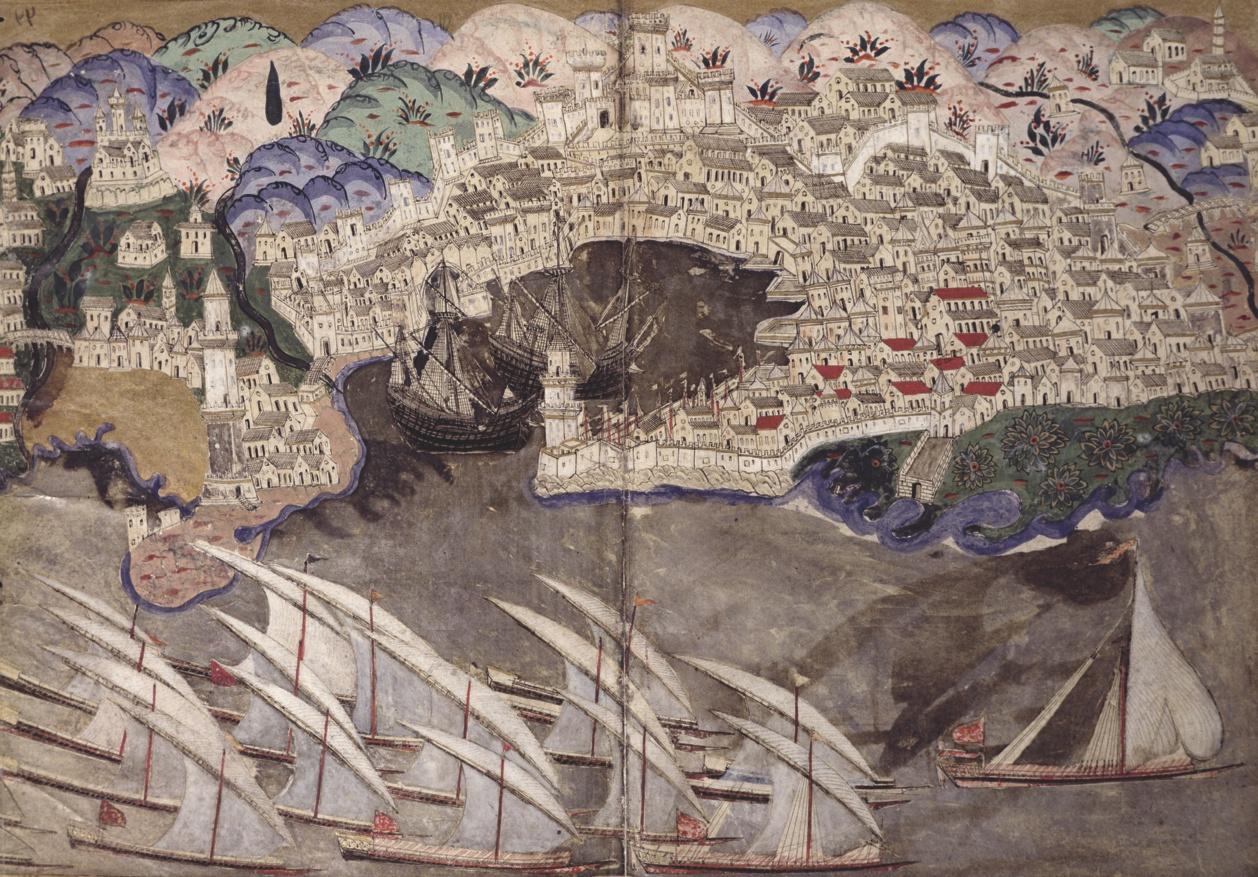
hand the founding of the Ottoman Empire brought stability to the countries around the Mediterranean Sea and in the Middle East. This had a favourable effect on trade and was particularly beneficial to Venice, the main merchant city in the Mediterranean. On the other hand, the Europeans always had to battle with the advancing Ottoman armies and European merchants were paying sky-high prices for luxury goods from the east which could only be bought through the Ottomans. For European merchants this was an incentive to seek new trade routes, so they could start importing luxury goods directly.
In their quest for new trade links, to buy spices and other luxury goods, the Europeans tried to reach the Indies. The Indies was the name they gave to the area far to the east and southeast of Europe: it covered present-day Asia, particularly Southeast Asia, but also included parts of
Africa. Over land the Europeans could only reach the Indies through hostile Ottoman territory. That is why they went in search of a sea route. For this purpose, they used a new type of ship. During their battles against the Ottomans on the Mediterranean Sea, the Genoese had designed a very effective new vessel called the caracca (carrack, in Dutch: kraak). Cannon could be positioned on the bow and the stern of a carrack and the ship was sturdy enough to sail long distances. They were also big enough to carry a lot of cargo. The merchants believed that they could use the carrack to reach the Indies. Meanwhile, knowledge about navigating the seas had grown thanks to contact with Arab sailors. Instruments like the astrolabe and the compass were used to set a course and navigate by the stars. People were well aware that the world was round and that the continents were surrounded by vast seas, so they knew it must be possible to reach the Indies by ship. But Europeans still had a lot to learn about the precise location of countries, oceans and continents. Their knowledge of the world was limited and was often mixed in with fantastic tales. People believed that spices and precious stones were there for the taking in the Indies.

source 11
The islands of Java and Sumatra in the Indian Ocean Spices come from islands in the Indian Ocean. Ships from many countries sail these waters. They are also home to creatures called Sirens. A Siren is half woman, half fish. Another type Siren is half woman, half bird. The island of Java has many plants and trees which produce all the precious spices of the Indies like nutmeg, galangal, and cinnamon. The Tartars call Sumatra Magno-Caulij. It is the easternmost island in the Indian Ocean. The people who live here look different to all the others. The mountains are home to men who are extremely tall, like giants. They are very dark and have little reason. If they capture a foreign man, they eat him. This island has two summers and two winters, so the flowers and plants there bloom twice a year. It is the last of the islands in the Indian Ocean and it is rich in gold, silver and precious stones. Paraphrased from: the Catalan Atlas from 1375-1377.
source 12
Ships leaving Lisbon bound for the New World. Engraving by Theodor de Bry at ‘America Tertia Pars ...’ 1592.

subquestion
The Portuguese were the first Europeans to set off on long sea voyages for the purposes of trade. In the fifteenth century, Portuguese Prince Henry the Navigator provided the money and ships to make voyages of discovery. Despite his nickname, he himself was not a seaman but he employed the best sailors and compiled all the available knowledge. He expected to earn vast trading profits and also wanted to discover the legendary kingdom of Prester John, a Christian kingdom that was supposed to be in the Indies. It was a place that featured in many stories. Prester John was said to be a mighty king who ruled over a prosperous area between the Islamic and pagan empires. Henry the Navigator hoped to find a Christian ally in Prester John, one who could help him compete with the Muslim merchants who controlled the trade with the Indies. The first explorers left from Portugal. The Canary Islands and the Cape Verde islands were discovered. Because the South Atlantic was largely unknown, the sailors kept the coastline in sight. The Portuguese explorers established forts on the African coast. This enabled them to take on supplies of fresh food and water. They also began to trade in gold and slaves. All of the information they discovered about the route along the coast of Africa had to be kept secret. It was only to be available to the Portuguese. In 1488 Bartholomew Diaz
rounded the Cape of Good Hope, the southernmost tip of South Africa. Vasco da Gama reached India in 1498. This gave Portugal a route to the source of the spices: it became known as the Carreira da India
When Vasco da Gama arrived in the Indian city of Calicut, he found Arab merchants there. Negotiations with the local ruler, the zamorin of Calicut, ended in violence and Arab merchants began to sabotage the Portuguese plans. Vasco da Gama returned home with only a small portion of the goods that he had hoped to find. On the return voyage, thirty crew members died of scurvy, a disease caused by a prolonged lack of vitamin C. Only two of the four ships made it back to Portugal. Nevertheless, the sale of the products generated so much money that the expense of the voyage was amply compensated. The king was pleased and another expedition was planned. The explorer Pedro Álvares Cabral followed the route taken by Vasco da Gama but, sailing too far to the southwest, he discovered Brazil and claimed it in the name of the Portuguese king. Many Portuguese ships then followed these routes to Africa, Brazil, India and Southeast Asia. Although they never discovered the kingdom of Prester John, they did bring home luxury goods that generated a great deal of profit.


Lagos
Trinidad




Cape Horn


Voyages of Christopher Columbus (Spain) 1492 - 1493 1493 - 1496

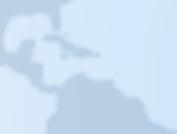

Capital




Diogo Cão 1482 - 1485 (Portugal)
Bartholemew Diaz 1487 - 1488 (Portugal)
Vasco da Gama 1497 - 1499 (Portugal)
source
Smart merchants started investing in expeditions to Asia and in the industries associated with them, such as shipbuilding. They tried to make as much profit as possible by investing their capital in international trade. This economic system is known as merchant capitalism
Pedro Cabral 1500 - 1501 (Portugal)
Ferdinand Magellan 1519 - 1522 (Portugal) 1498 1502 - 1504
14
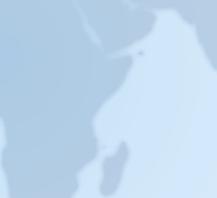
That night (20/21 May 1498) we dropped anchor two leugas [one leuga is three nautical miles or 5.6 km] from the city of Calicut. One day later (22 May) four boats sailed out to meet us, upon which our captain sent one of our sailors (a convicted criminal) back to Calicut with them. They took the man to meet two Muslims from Tunis, who spoke Catalan and Genoese. He was greeted with the following words: “May the devil take you! What are you doing here?”
They asked him what he was doing so far from home and he replied that he was looking for Christians and spices. They gave him shelter for the night, and bread and honey to eat. After the meal, one of them accompanied him back to our ships. As soon as the Muslim from Tunis was on board, he exclaimed: “What luck, what luck! There is an abundance of rubies and gems here! You should thank God that he has brought you to a country with such great riches!” We were most surprised, since we had never expected to hear our language spoken so far away from Portugal.
Paraphrased from: Report of Vasco da Gama’s first trip to India.

source 15
Paraphrased from: the diary of the Venetian Girolamo Priuli, 1501.
Pacifi c Ocean
Canary Islands Cape Verde S panish hemi s phere 4,000 km 2,000 1 : 230,000,000 0
Port u guese hemi s phere Spanish hemisp here Portug uese hemisp here
source 13 A number of important discoveries.
I commend you on your plan to sail to the west and I am sure, as you have already seen on my map, that the route you wish to take is not as difficult as people think. On the contrary, the course plotted by me is most certain. You would also entertain no doubt if you had met many people who have been in those countries. You are sure to find powerful kings there and many densely populated and prosperous cities and countries, which possess many types of precious stones. It will greatly please the rulers there if we educate them in the Catholic religion and all our sciences.
Paraphrased from: Toscanelli’s letter to Columbus, circa 1480.
Like the Portuguese, the Spaniards also wanted to discover new lands and gain vast profits from trade. That happened in 1492, when there was enough money and time to invest in a new enterprise. That year the Spaniards won their centuries-long struggle against the Islamic presence in the Iberian Peninsula (the Reconquista) and the Spanish King Ferdinand and his wife Isabella decided to follow Portugal’s example. The Genoese navigator Christopher Columbus was given Spanish backing for a voyage to discover a sea route to the Indies heading west across the Atlantic. Scholars, including the cartographer Toscanelli, had convinced Columbus that this was possible. Toscanelli’s map showed that you could reach Asia by crossing the Atlantic Ocean.
Based on the journal that Columbus kept, we can reconstruct life aboard the Santa Maria. “When you walk into the captain’s cabin, you will see an impressive man, Juan de la Cosa, sitting to the left of Captain Columbus. He is both the ship’s owner and its navigator. One of the most important duties on board a ship is navigation, determining the course to be maintained. In front of De la Cosa there is a map by Toscanelli and instruments such as the astrolabe and compass, essential for navigating the seas. The other man at the table is Luis de Torres, an interpreter who has been brought along to talk to the locals.
The deck, the fore deck and the hold are also hives of activity. Here for example, you will find the cook and the steward in charge of the food stores and the ship’s rations. Over there is Dr Juan Sanchez, examining a wound sustained by one of the cabin boys. Do you see the crates of weapons in the corner? Be careful not to touch them. The muskets and cannon are checked every day by Diego de Arana, the weapon master.
There is plenty of food available, with large quantities of dried legumes and cereals, hardtack, salted meat and dried fish. It is enough to feed the whole crew for one year. The ship’s hold also contains chests of trinkets, glass, iron and copper, to exchange or give away. The man standing next to one of the chests is goldsmith Cristobal Caro. He hopes that those chests will be filled with gold on the return voyage.

subquestion 3 How did Spain take possession of America?source 16 Columbus goes ashore. Engraving by Theodor de Bry, circa 1594.

In 1492, Columbus departed with three ships. In October of that year, the explorers sighted land. Columbus went ashore. He called the people there ‘Indians’ because he thought he was in the Indies. Columbus named the territory San Salvador, another name for Jesus meaning Holy Redeemer. He wrote about the discovery in his journal.
At the end of 1492, Columbus sailed back to Spain to tell the king and the queen about his discoveries. He had to convince the Spanish rulers that his expedition had been a success. Columbus announced that the western route to the Indies had been found and would bring the Spaniards great wealth (Source 19).




At two o’clock in the morning we sighted land. Before long we saw naked people along the shore. The admiral went ashore in the armed sloop. The admiral had the royal standard with him and the captains each had a flag bearing a green cross and the letters F and Y, with a crown above each letter. We saw green trees, many pools and all kinds of fruits. The admiral claimed the island for the king and queen by issuing the proper proclamations.
Paraphrased from: Columbus’s Journal, 1492-1493.


At the beginning of the sixteenth century, Portuguese sailors discovered the Moluccas and other islands in the Indonesian archipelago. They had never sailed this far east before. The Moluccas were very rich in spices (especially cloves), so investors were eager to finance new expeditions to these islands. The discovery of the Moluccas led to a dispute with Spain. In the Treaty of Tordesillas, dating from 1494, Portugal and Spain had divided the undiscovered parts of the world between them: everything west of Cape Verde (island group off the west coast of Africa) would come under Spanish rule, while everything to the east would belong to Portugal. After the Portuguese discovered the Moluccas, the Spanish began to have their doubts. Shouldn’t these islands belong to them?
After all, wouldn’t it be possible to sail west and reach the islands from the other side? The experienced Portuguese navigator Ferdinand Magellan was daring enough to try.
On behalf of the German Emperor Charles V, who was also King of Spain, he sailed from the city of Seville in 1519 on an expedition that involved five ships and 250 crew members and was financed by the Fuggers, a wealthy family of German bankers. The Italian nobleman Antonio Pigafetta went along and wrote an account of the hardships during the voyage, the flora and fauna, and the foreign peoples the explorers encountered.
source 19
Voyages of Cortés to Mexico to Tenochtitlan
Voyages of Pizarro first expedition 1524 - 1525 second expedition 1526 - 1528 third expedition 1530 - 1534
Voyages of Columbus first expedition 1492 - 1493 second expedition 1493 - 1496 third expedition 1498 fourth expedition 1502 - 1504



viceroyalty of New Spain viceroyalty of Peru
Voyages of discovery to the New World, with the Spanish viceroyalties of New Spain and Peru.
There are unlimited supplies of gold. Your Highnesses can see that I will give them all the gold they need, all spices and as much cotton as Your Majesties order me to bring aboard, and of which Your Majesty will be able to sell as much as he wants, and pagan slaves. I have also found cinnamon and will also secure thousands of other important commodities.
Paraphrased from: Columbus’s Journal, 1492-1493.
Once Columbus had made clear the opportunities that lay waiting in the territories he had discovered – the New World – adventurers crossed the Atlantic to make their fortune. These adventurers were called conquistadors, which means conquerors. They headed into the interior, fought the indigenous peoples and claimed vast tracts of land in the name of the Spanish king. The Spaniards were able to win these battles with a small number of soldiers because they possessed weapons and military technology unknown to the indigenous peoples, such as iron swords, helmets, armour, firearms and riders on horseback. The conquistadors also formed alliances with some indigenous groups in order to defeat others.
Aztec spies talk about their encounter with the Spaniards

Their battle gear is all made of iron: they dress in iron, they wear an iron cap, carry iron shields and lances. They sit on the back of their ‘deer’ which are as tall as roofs. Their entire body is covered and only their face is visible. They are white as chalk. They have yellow hair, although some are dark. Their beards are long and also yellow, as are their moustaches.
Their hair is frizzy and thin, rather like embroidery. Their dogs are huge and overwhelming, with wavy ears and big, drooping tongues. These animals have intense yellow eyes, that shoot sparks and their hollow bellies are long and ribbed. They are strong and robust, restless, and run panting with their tongues hanging from their mouths. Spotted as jaguars they are, with spots of all different colours.
Paraphrased from: Bernardino de Sahagún, General History of the Affairs of New Spain, 1540-1569.
Around 1500 many different ethnic groups lived on the American continent, each with their own customs, language and culture. At this time, Mexico was home to the Aztecs, a people that had subjugated many other peoples in the fifteenth century. The Spaniards appeared just as the Aztec civilization had reached its peak. Spanish soldiers marvelled at the Aztec cities. These cities floated on water and their temples towered above them. Trade was very active.
Battle between the Spanish explorer and conqueror Hernando Cortes (1485-1547) and the Aztec leader Cuauhtemoc at the city of Tenochtitlan in 1521. Illustration from the Mexican illustrated history Lienzo de Tlaxcala dating from circa 1550.
Artisans made beautiful and useful artefacts. The religious ceremonies made a deep impression: the Aztecs sacrificed human hearts to their gods. The leader of the Aztecs was called Montezuma and the Aztecs saw him as their god.
In 1519, the Aztecs came into contact with Hernán Cortés. Cortés had crossed from Cuba to the mainland of South America with approximately 500 soldiers. He wanted to discover riches and claim territory in the name of the Spanish king. Cortés soon managed to defeat the Aztecs. He was helped by coincidence. The Aztecs believed in the legend that the god Quetzalcoatl would one day return to them. Because Cortés made such a mighty impression on them, the Aztecs thought he might be the deity they were waiting for and so they received the Spaniards with great reverence. But in 1521, the Spaniards conquered the Aztecs with military force, with the help of the indigenous peoples who had previously been defeated and oppressed by the Aztecs. The Aztec civilization was destroyed and Cortés became the governor of Mexico.
The west of South America was home to another great empire. It belonged to the Incas, a civilization that had emerged in the mountainous Andes region from the thirteenth century. The Incas had expanded their power by forming alliances with other peoples or by defeating them in battle. In order to govern their vast empire, which stretched from Ecuador deep into Chile, the Incas had established a communication system. Couriers travelled
source 23
Aztec solar calendar from the fifteenth century. The image in the centre is the face of the sun god Tonatiuh. He is holding human hearts in his claws while calling out for human sacrifices with his outstretched, razor-sharp tongue. He is surrounded by the four ages of Aztec history and circles with signs that refer to the days of the month and the corners of the earth.

through the country at great speed on paved roads up to 15,000 kilometres long, delivering messages and orders from the administrative centre of Cusco. These roads were also used by armies. The Incas worshipped their ancestors and preserved them as mummies. They believed in life after death and regarded the sun and the moon as gods. The sun god Inti was the chief god and the ancestor of the Incas. Solar festivals were held in his honour. The government was led by the Inca, who was seen as an incarnation of the sun god.
Spanish conquistador Francisco Pizarro first came into contact with the Incas in 1526. The Spaniards saw “many silver and gold, bracelets, armour, beads and precious stones, mirrors decorated with silver, large and small bowls; there were cloaks of wool and cotton, emeralds and other precious stones and pieces of crystal.” Pizarro was eager to conquer the territory and demanded to meet Atahualpa, the Inca leader. The Inca agreed to meet him unarmed, hoping that the Spaniards would be so impressed by the Incas that they would keep the peace. But Pizarro was not that impressed and took Atahualpa prisoner. He forced the Inca to tell him where he had hidden his gold. Atahualpa was eventually killed and Pizarro conquered the entire Inca Empire with little resistance.
Machu Picchu, the famous Inca city in the Andes, built around 1450. There are a number of different theories about the construction of the city. One is that the city was only inhabited by distinguished citizens who stayed there in the summer. Another theory argues that the city was built for the cultivation of coca leaves, because coca plantations were easily accessible from the city.
According to a third theory, the town was built as a fortress for the defence of the Inca Empire. The city was abandoned after the Spanish conquest.

At the beginning of the fifteenth century, the Incas expanded their empire by conquering other peoples. To control their vast empire, they set up a road network on which armies and messengers could easily reach all parts of the empire from Cusco, the centre of government. The language of the Incas, Quechua, and typical Inca arts and crafts, such as particular woven patterns, spread rapidly across the empire. In addition, the Incas built mighty settlements, such as the city of Machu Picchu.
The Incas believed in an afterlife and worshipped their ancestors. Nature was very important to the Incas. They regarded the sun and the moon as gods. The sun god Inti was the chief god and the founding deity of the Incas. Solar festivals were held in his honour, and the sacrifices included human sacrifices.
The government was led by the Inca, who was seen as an incarnation of the sun god. The Inca was a political and a religious leader. The other governors were members of his family. The empire was divided in four. The population paid taxes in kind; they provided services by working the fields and building roads.
Agriculture was the means of subsistence. Potatoes, maize and beans were the staple foods. In order to farm land that was higher up, the Incas built terraces on the mountain slopes. The lama was the beast of burden and a source of wool. The land was owned by the community, it was not private property.
The Spaniards, who had seen the treasures of the Incas, dreamed of moving into Inca territory and obtaining their riches. The Spanish conqueror Pizarro demanded that the Incas meet him unarmed. Atahualpa, the Inca, agreed to a meeting without weapons. He was not afraid of the small group of Spaniards. He hoped that the Spaniards would be so impressed by the Incas that they would keep the peace. It seemed that he ignored the warnings of his father, who had predicted that bearded men (messengers of the Inca god) would come from overseas to destroy the Incas. After a brief altercation the Spaniards did indeed attack. Below you can read reports from a number of sources.
There was a conflict in the kingdom between two brothers: Huáscar, the legitimate Inca, and his brother, Atahualpa. This conflict led to a war that lasted 36 years. Even as a child, Huáscar was arrogant and petty. He did not hesitate to have his officers killed and so they fled. Not a single soldier was loyal to him. And so it was that he lost his kingdom through his arrogance and avarice.
Paraphrased from: Felipe Guamán Poma de Ayala, El primer nueva corónica y buen gobierno [The First New Chronicle and Good Government], 1615/1616.
Brother Vicente, a Spanish friar, carried a crucifix and a bible. He told Atahualpa that he was a messenger from another ruler, a great friend of God, and asked him to agree to a pact of friendship and to worship the crucifix and the Holy Gospel and nothing else, because all other gods were worthless. Atahualpa replied that he had no reason to worship anything other than the immortal Sun and that he would continue to honour his saints and gods. He asked Vicente who had told him about his faith. “The gospel, the book,” Vicente said. “Give me that book, that it may speak to me,” said Atahualpa. He took the book in his hands and began to flick through the pages, but before long he said, “To me the book says nothing, to me it does not speak,” and he threw the book away. Vicente shouted, “Listen, fellows, these Indians are against our holy faith!” At these words, the attack began.
Paraphrased from: Felipe Guamán Poma de Ayala, El primer nueva corónica y buen gobierno [The First New Chronicle and Good Government], 1615/1616.
The soldiers fired their guns. They killed the Indians as if they were ants. The Indians were shocked by the guns and the horses. The use of weapons and the astonishing appearance of the attackers left the Indians terrified. Many people were trampled. So many Indians were slain that it was impossible to count them. The Spaniards lost only five men. Atahualpa was taken from his throne and became Pizarro’s prisoner. He was kept in chains and guarded by Spanish soldiers. Deprived of his throne, he sat down sadly on the ground.
Paraphrased from: Felipe Guamán Poma de Ayala, El primer nueva corónica y buen gobierno [The First New Chronicle and Good Government], 1615/1616.
If Wayna Capac [Atahualpa’s father, the Inca who had died in 1528] had still been alive when we marched into Peru, we would never have been victorious, because he was deeply loved by his people; if the country had not been torn apart by the wars between his successors, we would never have been able to force our way in, let alone conquer them – even if over one thousand Spanish soldiers had come at once.
Paraphrased from: Pedro Pizarro, Relación del descubrimiento y conquista de los reinos del Perú, [Relation of the discovery and conquest of the kingdoms of Peru] 1571.
source 27
Once Atahualpa had been captured and had given the Spaniards all his gold, the Inca chief was sentenced to death at a show trial. The original plan was to burn Atahualpa at the stake, but at his own request, he was strangled instead. The Incas believed that their body had to be as intact as possible to enter the afterlife. Atahualpa first had to agree to be baptized before his request was granted. He received the Christian name Francisco, after his conqueror Francisco Pizarro. After his death, Atahualpa was given a Christian burial. This painting by Luis Montero from the nineteenth century shows Pizarro attending Atahualpa’s funeral.
The Spanish had a force of 160 men. They attacked an empire of between five and ten million people. But Pizarro had lethal weapons and the latest technology: firearms and mechanical crossbows. Pizarro used interpreters to question the locals. He knew that a civil war was shaking the very foundations of the empire. On his march, he mobilized allies among the indigenous population, for many peoples in Peru were hostile to the Inca regime. Pizarro had a force of Bronze Age warriors with him; with their clubs, spears and feathered headdresses they formed a strange contrast to the Spaniards’ lances and steel helmets. Based on Michael Wood, Conquistadors, London, 2000.

Once the Spaniards discovered and conquered large parts of the New World, they founded colonies there. The most successful conquistadors and army officers, who settled in Hispanic America, received a fief from the Spanish king. This was known as an encomienda It consisted of a large expanse of land, along with the indigenous people who lived there. The Spanish liegeman, the encomendero, was allowed to raise taxes and make the indigenous people work for him a few days a week. In return, the Spanish ruler protected them and instructed them in the Catholic faith. The Spanish government shared in the profits. The indigenous peoples were put to work on the large estates owned by the Spaniards, the haciendas. They had to work on farms and in the mining industry, especially in the Cerro de Potosí silver mine, which was discovered in 1545. This mine was almost a mountain of silver ore. It was easy to obtain vast amounts of silver, not only because the silver ore was close to the surface, but also because labour costs were low. The indigenous peoples paid their taxes by working in the mines; they were paid nothing for their labour.

When the Spaniards came, the Indians were subjected to so much violence and destruction that they are not even a shadow of what they once were. They are seen as barbarians and the lowest of the low, when in fact they were more civilized than many other nations, if we disregard certain forms of tyranny that characterized their way of government.
Paraphrased from: Bernardino de Sahagún, General History of the Affairs of New Spain, 1540-1569.
Rules were put in place to prevent the exploitation of the indigenous population, but those rules were not properly enforced. As a result, indigenous people were often treated badly and tried to flee. Sometimes they succeeded, but more often than not they were tracked down and horribly punished. Mistreatment caused many fatalities among the indigenous population. In addition, they fell victim to the diseases that the Europeans brought with them: smallpox, plague, typhoid, influenza and measles. These diseases were unknown in the New World. When indigenous people became infected, they died by the thousands because they had no immunity against the disease.
Criticism of the encomienda system and the treatment of the indigenous population, voiced by the Spanish priest Bartolomé de Las Casas and others, led in 1542 to the New Laws. The indigenous Americans became subjects of the king and as such were not to be abused. They had the right to take their complaints to court.
The indigenous people were eventually unable to cope with the hard labour imposed on them and they were replaced by slaves. Europeans shipped black slaves from Africa who were often captured during the European wars fought there. In America, the slave ships were unloaded and then filled with the products from the plantations (tobacco, cotton, cane sugar and rum) before sailing for Europe. From there, the ships transported weapons, ammunition, alcohol and textiles to Africa, where new slaves were bought. This system is called the transatlantic slave trade or triangular slave trade
subquestion 4 How did Spain change American society?source 31 The Spanish colony Potosí at the foot of a mountain of silver ore. Engraving from the seventeenth century.
NORTH AMERICA
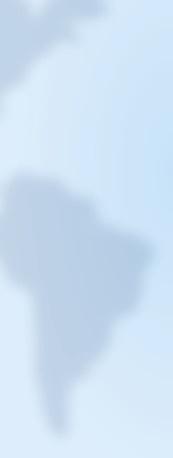
sugar, cotton, tobacco silver
New Spain SOUTH AMERICA
Great Britain EUROPE p o t
West Indies
slaves 4,000 km 2,000 1 : 210,000,000 0
Social changes

Spanish treasure fleet Atlantic triangle viceroyalty of New Spain viceroyalty of Peru Portuguese Brazil
source 33 The routes to the Spanish colonial empires; the route of the Spanish treasure fleet and the triangular slave-trade route.
New government


When we study history, we look at what has happened in the past. Events come together to form a development. When we study developments, we look at what changes and what stays the same. What stays the same is called continuity. What changes is called discontinuity. Continuity and discontinuity can occur simultaneously in one place. After a war, for example, national boundaries often change and new leaders come to power in some countries. However, the position of poor people in the region may remain as bad as ever.
The arrival of the Spaniards changed many things for the indigenous population. The Europeans occupied their territory and exploited them by making them do hard labour. The indigenous peoples came into contact with another civilization and tried –unsuccessfully – to preserve their culture. Many of them died from the diseases brought over by the Europeans. For the indigenous peoples, these changes were very rapid and represented a major deterioration in their living conditions.
Tell me, what gives you the right to treat these Indians so cruelly? What gives you the right to wage such detestable wars against these people who lived quietly and peacefully in their own lands?
Paraphrased from: Antonio de Montesinos (1550), quoted in Mark Burkholder and Lyman Johnson’s Colonial Latin America, 1990.
Another priest, Bartolomé de las Casas, also spoke up for the indigenous population. This monk travelled through Hispanic America from 1502. He protested against the mistreatment of the indigenous population.
There is no nation – no matter how primitive, uncivilized, barbaric, savage and even violent – who cannot be persuaded to live a good life with love, kindness and generosity. For all people are human beings. In their creation all men are equal.
Paraphrased from: De Las Casas (1550), based on quote in Michael Wood’s The Conquistadors, 2000.
source 34
A conquistador and an indigenous American stand side by side in a classical pose. Picture from the nineteenth century.

News of the discoveries brought back by the explorers was greeted with delight by the curious Europeans. But the cruelty the conquistadors used to expand their world, could not always count on sympathy. Philosophers and theologians began to think about the treatment of foreign peoples in the New World. Was it true that the colonies had been in a lower ‘natural’ state before the arrival of the Europeans? Did the indigenous peoples really have to be ‘cultivated’ by means of science, technology and Christianity? And did this have to be accompanied by cruelty? This soon led to a debate among Spanish thinkers, which spread across Europe.
In 1511 the monk Antonio de Montesinos gave a powerful sermon in front of the Spanish conquistadors in Santo Domingo in which he spoke up on behalf of the indigenous Americans and accused the Spaniards of inhuman behaviour.
De las Casas travelled to Spain and argued his case at the court of Charles V with the scholar Juan Ginés de Sepúlveda, a man who took it for granted that the indigenous Americans were inferior.
The Indians did not live in an idyllic world before the Spaniards came. They continually conducted ferocious wars against each other and ate those who were slain. I therefore believe that these are beings of a lower order whose habits and characters are barbaric and uncivilized, and that this was so before the Spaniards arrived. Not to mention their religion and the sacrifices (human hearts) with which they worship the devil. There is no doubt about the fact that these peoples, so uncivilized and barbarous, have been justifiably brought under the rule of Spain.
Paraphrased from: Juan Ginés de Sepúlveda (1550), based on quote in Michael Wood’s The Conquistadors, 2000.
Another voice became involved in this discussion: Wamam Poma, an indigenous American who tried in vain to send the following text to the Spanish king.

Although the Incas may have begun as barbarians, they have developed over a long time. Your Majesty, imagine being an Indian in your own country and being forced to carry a load like a horse and being driven along with blows from a stick. Imagine being called a dirty dog. Imagine having your women and your property taken away for no reason. What would you do in that situation? In my opinion, you would gladly eat your tormentors alive.
Paraphrased from: Wamam Poma (1613), based on quote in Michael Wood’s The Conquistadors, 2000.
The sixteenth-century humanist Michel de Montaigne wrote about all kinds of topics he considered to be important. At the court of the French king, he met three indigenous Americans who had been taken to France as prisoners. Through an interpreter he was able to ask them all kinds of questions. In his essay On Cannibals, he described not only this encounter but also the facts once told him by a sailor. He came to the conclusion that the indigenous Americans were not barbaric, but were instead a kind of noble savages.
These peoples seem to me, then, barbaric in that they have been little refashioned by the human mind and are still quite close to their original naiveté. They are still ruled by natural laws, only slightly corrupted by ours. They are in such a state of purity that I am sometimes saddened by the thought that we did not discover them earlier, when there were people who would have known how to judge them better than we.
Paraphrased from: Michel de Montaigne, Essays, 1580.
De Montaigne also stated his views about the attitude of the West towards the indigenous Americans.
I do not find that there is anything barbaric or savage about this nation [...] unless we are to call barbarism whatever differs from our own customs. Indeed, we seem to have no other standard of truth and reason than the opinions and customs of our own country. There at home is always the perfect religion, the perfect legal system; the perfect and most accomplished way of doing everything.
Paraphrased from: Michel de Montaigne, Essays, 1580.
Another humanist, the Flemish Justus Lipsius, did not agree with Michel de Montaigne.
In the past, the Romans imposed an oppressive yoke on the Earth, but with a beneficial outcome, because it drove out the spirit of barbarism as the sun drives out the darkness before our eyes. I dare to predict that the same will happen with the New World, which the Spaniards with beneficial cruelty have made an emptiness to populate and develop her from now on. Thus God governs the plantation which is our wide world.
Paraphrased from: Justus Lipsius, quoted in Robert Lemm’s Ochtend van Amerika (1989).
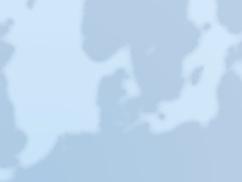


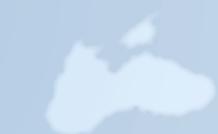


Venetiaans bezit Spaans bezit Bezit van Oostenrijkse Habsburgers
Osmaanse Rijk, met Vazalstaten grens van het Heilige Roomse Rijk veldslag
Under Venetian control
Under Spanish control Under control of the Austrian Habsburgs Ottoman Empire, with Vassal States border of the Holy Roman Empire battle
Venetiaans bezit Spaans bezit Bezit van Oostenrijkse Habsburgers
Osmaanse Rijk, met Vazalstaten grens van het Heilige Roomse Rijk veldslag
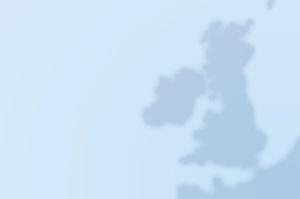
FRANCE Pavia 1525
Vienna 1529


subquestion








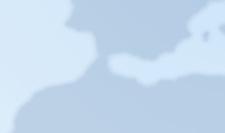











5 What effects did the discovery of America and the trading contacts in Asia, have on Europe and the worldview of the Europeans?










In the early sixteenth century, Emperor Charles V ruled the largest empire in Europe. Charles was born in the year 1500. Through his mother’s side of the family, he inherited property in Spain and overseas territories in America. It was his grandparents, Ferdinand and Isabella, who had sent Columbus off on his voyages of discovery. From his father, Philip the Fair, Charles inherited the prosperous lands of Burgundy and a large part of the Dutch provinces. In 1519, German princes gave him the title Emperor of the Holy Roman Empire. From that moment, he stood at the head of a global empire. However, his empire was under attack from many sides and Charles was therefore badly in need of funds. He paid his armies with revenues from tax collection and loans. But these did not bring in enough money to meet Charles’s needs. The riches of the New World were therefore a godsend for the emperor. When a consistent level of silver production in South and Central America was finally achieved using slave labour, a treasure fleet sailed back to Spain each year. Between 1550 and 1560 the Spanish treasure fleet returned with tons of gold and silver, one fifth of which went straight into the royal coffers. It made the Spanish monarchy the wealthiest in Europe. Yet still it was not enough to finance the country’s wars and to pay its officials and creditors.
Charles V’s main enemy in Europe was the French King Francis I. In the 1520s they fought two major wars. The fighting took place in Italy, where both dynasties claimed a number of very wealthy areas, including the Duchy of Milan. If the Spanish-German ruler were to succeed in his plan to conquer northern Italy, he would be able to connect his German territories with the southern Italian regions of Naples and Sicily. Charles finally won thanks to his victory at the Battle of Pavia, in 1525. At more or less the same time, he achieved military success against the Ottoman Empire. The Ottomans had been advancing into southeast Europe since the late fifteenth century, occupying Belgrade and Budapest. Led by Sultan Suleyman I, the Ottomans forced their way through to the northwest. In 1529 Charles V defeated the Turks before the gates of Vienna. When he went on to take Tunis on the north coast of Africa in 1535, he brought the Turkish advance to a halt.
The supply of American silver to Spain and the profits generated by European trade in Asia led to changes in the European economy. There was an increase in the amount of Spanish money in circulation and this lowered the value of Spanish coins, the most popular method of payment among European merchants in the mid sixteenth century. This led to currency depreciation and prices rose.
These price increases were also caused by a rise in the population of Europe in the sixteenth century and the shortage of food that came with population growth. Many people lived in poverty. Some merchants benefited from this economic situation. They managed to capitalize on the rising prices by setting up major trading networks. For example, these merchant capitalists employed workers to produce cloth and exported it to distant markets in countries discovered by the explorers. From there they brought expensive goods back to Europe. These merchants were wealthy city dwellers and many of them were not members of the traditional nobility. They were the ‘new rich’ of Europe and gave their financial backing to the European monarchs. One example is the wealthy Fugger family from Augsburg, who lent large sums of money to Charles V.
Europe benefited greatly from exploring and exploiting new territories. European power increased, because now Europeans themselves could sell goods around the world for the financial benefit of Europe. The exploration of the world led to the collection of a wealth of information. Rapid advances were made in shipping and the science of

navigating the seas. The knowledge of continents, countries and oceans also increased, and this led to ongoing improvements in mapmaking. People also began to make globes, spherical maps of the world, which showed the newly discovered lands on the other side of the world. Initially the explorers tried to keep their knowledge of routes and territories a secret, but soon the new information spread across Europe, even reaching the court of the Ottoman sultan.
The dissemination of knowledge about the world was accelerated by the invention of the printing press. This enabled maps, books and illustrations drawn by men such as Petrus Plancius (Source 1) and Theodor de Bry (Source 16) to be printed and sold in large quantities. Many Europeans could now see with their own eyes what it was like to travel to the Indies or the New World, and they were able to learn about cultures, religion, history, law and civilizations far beyond Europe. A new world opened up for them.

1 The beginning of European overseas expansion.
2 The changing Renaissance view of the world and mankind.
what you know
How the discovery of America and the founding of a trading empire in Asia changed the societies of Europe and America.
1 Why Europeans went in search of new trade routes overseas.
2 How the Portuguese established a profitable trading empire.

3 How Spain took possession of America.
4 How Spain changed American society.
5 What effects the discovery of America and the trading contacts in Asia had on Europe and the worldview of the Europeans.
what you can do
You can distinguish between continuity (things that do not change) and discontinuity (things that do change as a result of an event). You also know that continuity and discontinuity can coexist. In other words, not everything has to change.
1492
1492 > Columbus discovers America
1494 > Columbus’s second voyage of discovery to America
1498 > Vasco da Gama discovers a sea route to India
age of explorers and reformers (1500-1600 ad)
1500 1525 1550 1575
1515 > Charles V becomes ruler of the Netherlands 1516 > Charles V crowned King of Spain
1519 > Charles V appointed Holy Roman Emperor 1519-1522 > Magellan sails around the world 1519-1521 > Cortes conquers the Aztecs
1525 > Charles V defeats France 1526 > First treasure fleet sails for Spain 1529 > Turkish siege of Vienna 1531-1534 > Pizarro conquers the Incas
1542 > New Laws for Spanish colonial rule 1542 > Founding of the Spanish viceroyalty of Peru 1545 > Founding of silver mining town Potosì 1559 > Charles V dies 1600
Powerful people native to present-day Mexico; they founded an advanced civilization. carrack
Battle-ready ship from the fifteenth century, strong enough to make ocean voyages.
Carreira da India
A sea route to India discovered by the Portuguese. conquistadors
Spanish adventurers who took control of large parts of America in the name of their king and who subjugated the indigenous peoples. continuity
A word that describes something that remains the same for a long time throughout history. currency depreciation
Money loses value as the price of goods increases. This means that you can buy less for the same amount of money. discontinuity
A word that describes something that changes throughout history. encomienda
Fief of the Spanish king in Hispanic America, consisting of a certain area and including the indigenous people who lived there. haciendas
Vast Spanish-owned estates in the New World. humanist
Intellectual who looked back on Antiquity as an ideal and believed that man was the measure of all things. Incas
Indigenous people of South America (present-day Peru) who built a large and powerful empire. indigenous peoples
The original inhabitants of a country or region. The indigenous peoples of South America included the Aztecs and the Incas. Columbus called them ‘Indians’ because at first he thought he had reached the Indies. khan
Title of a Mongol or Turkish ruler. merchant capitalism
A system in which merchants invest in trade with distant territories to maximize profits.
Merchants who invest in trade with distant territories to maximize profits. miscegenation
Mixing of the various population groups (e.g. in Hispanic America).
New Laws
Spanish legislation which stated that the indigenous peoples of Hispanic America were subjects of the king, and therefore had to be treated fairly.
The Ottoman Empire was a Turkish empire. Its title is derived from the name of the founding father Osman. It existed between the fifteenth and twentieth century and was governed from the city of Istanbul.
Reconquista
Spanish struggle against the Islamic presence in the Iberian Peninsula.
Silk Road
Trade route between Asia (most notably China) and Europe, named after the silk fabrics transported from the East by caravan.
A fortified outpost in another country (usually overseas) established for the purposes of trade. transatlantic slave trade Trade network between Europe, Africa and America in which slaves, weapons and silver were traded by Europeans.
An agreement dating from 1494 in which Portugal and Spain divided the undiscovered parts of the world between them: everything west of Cape Verde (islands off the west coast of Africa) would come under Spanish rule, while everything to the east would belong to Portugal.
triangular slave trade
See transatlantic slave trade viceroyalties
Areas in Hispanic America that were governed by a viceroy on behalf of the king.
